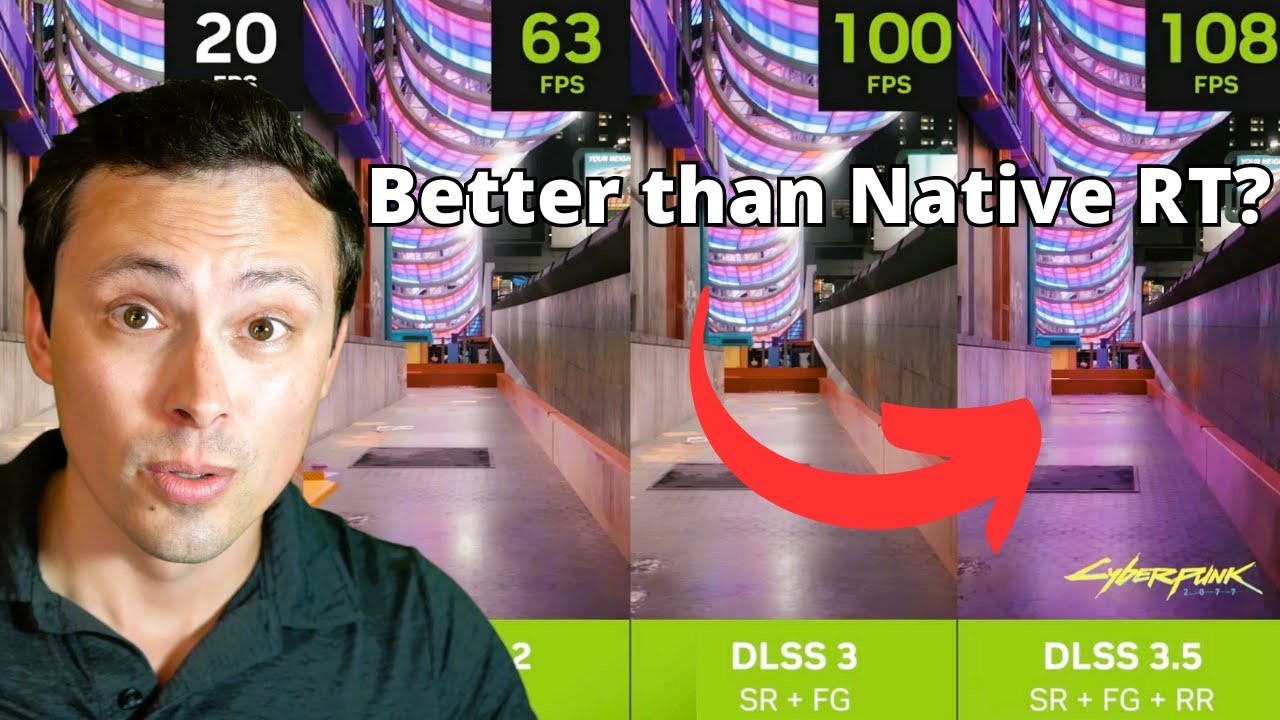Replacing the usual denoising algorithms used to generate an image from the (usually small) number of traced rays in a scene with a new AI model that runs alongside DLSS upscaling, Nvidia is able to show ray traced reflections and shadows with less artifacts, significantly improved clarity, and more data points being represented (like soft shadows and small occlusions) at no penalty to performance.
Unlike frame generation, DLSS 3.5’s ray reconstruction will work on all RTX series cards, including the 2000 series. In one example, Nvidia shows how fast moving objects no longer leave trails of temporal artifacts when RT global illumination is enabled.
It’s a bit annoying that they called it DLSS 3.5 even though it has nothing to do with DLSS 3. This is an enhancement for ray-tracing whereas DLSS 3 is frame-generation, you’d think the .5 means it’s just an enhanced version of that.
Nvidia’s updated naming scheme actually asks developers to drop the “DLSS 3.0” name for frame generation. Menus should call the feature “DLSS Frame Generation” and it’s a separate toggle. DLSS 3.5 now includes supersampling, ray reconstruction and frame generation, where the first two features are available for all RTX cards and enabled together, and the latter is exclusive to the RTX 4000 series and enabled separately.
Nvidia has a branding problem. DLSS stands for Deep Learning Super Sampling (or at least it used to). Kind of silly for Nvidia to lump entirely unrelated features under the same name.
This is actually kind of fixing that
The latest DLSS is DLSS 3.5 and Frame Generation is now just DLSS Frame Generation.
deleted by creator
As always, this will require games to be updated to support the new features, and this can’t be enabled by a simple DLL swap. At the moment, a few games, including Alan Wake 2 and Cyberpunk 2077, are announced to be working on implementing DLSS 3.5.
Here is an alternative Piped link(s): https://piped.video/watch?v=aIF91ThXDr8
Piped is a privacy-respecting open-source alternative frontend to YouTube.
I’m open-source, check me out at GitHub.
This is very exciting. Unfortunately, AMD card won’t be able to benefit from this, making the GPU market ever more fragmented.
How does this fragment anything? DLSS and Nvidia’s ray tracing tech have always been exclusive to their own RTX cards. Nothing changes in that respect. Ray tracing, as a whole, isn’t exclusive to Nvidia, but their tech has been.
NVIDIA literally couldn’t make this work on AMD cards if they wanted to. The hardware simply does not exist on AMD cards to run it and so the performance impact on AMD cards would be worse than not using it at all. Then everyone would complain NVIDIA is purposefully crippling AMD.
Contrary to popular belief FSR isn’t behind DLSS because NVIDIA has more magical AI capabilities to train DLSS, and AMD through partners like Microsoft and Sony have access to just as much if not more AI training capability to train FSR if they wanted.
Additionally, NVIDIA isn’t going to be wasting any more AI horsepower on training DLSS than they have to when there is essentially infinite demand for it from high paying customers right now. If training your algorithm was the secret sauce AMD could do it too, and they’d be able to catch up simply by spending more over a shorter period of time.
The problem is that FSR has to be extremely lightweight to run, because it competes with the graphics rendering for resources. The more AMD makes FSR do the less performance advantage it will provide. DLSS on the other hand uses the tensor cores that are otherwise unutilised on RTX cards. This means DLSS can be a significantly heavier and more complicated system because it has essentially free resources to run on.
Until AMD has standard tensor or some other free performance to use on their cards, FSR is going to remain behind.
I’m not blaming NVIDIA for this, it’s just bad that the two jobs of creating cards and creating rendering tech are combined within a single company.






